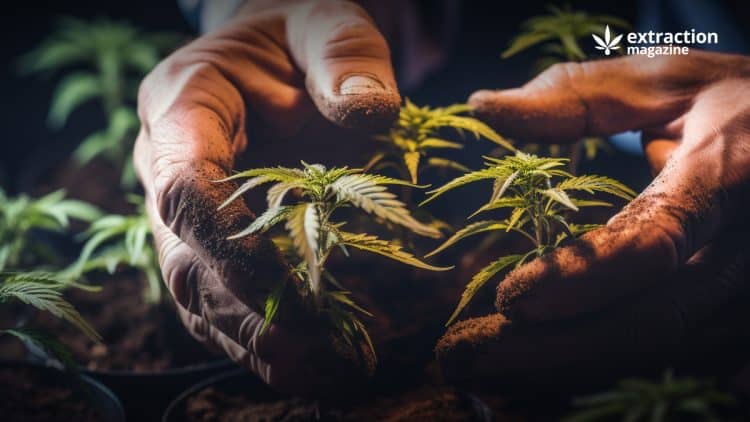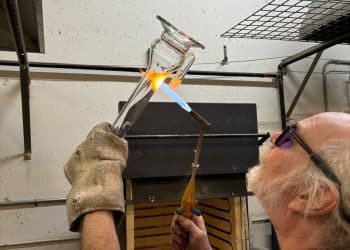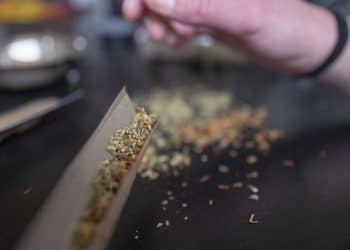The ability to distinguish male and female cannabis plants is an important component of growing cannabis, as it will impact the growth process and the final product quality.
The Dioecious Nature of Cannabis Plants
The cannabis plant species is unique from most others in the plant kingdom, as the majority of plant species are monoecious. This means the same plant has both male and female reproductive organs. As such, these types of plants are readily able to fertilize their own flowers with their own pollen.
Cannabis, on the other hand, is dioecious in nature. This means cannabis produces male and female plants separately. Cannabis is an annual dioecious plant that completes its life cycle in one year when grown in the wild.
The dioecious nature of cannabis plants allows growers to separate male and female plants, which prevents flowers from getting fertilized and going to seed. In turn, this results in higher-quality flowers. It also gives growers more control in terms of crossing certain male and female plants together.
For seed production to occur, the pollen of a male cannabis plant must fertilize the reproductive organs of the female flower. While female plants produce flowers, male plants create pollen sacs. The female traps pollen in order for seed production to start.
When grown in a controlled environment, specific techniques can be applied to extend the life cycle of the cannabis plant. Through cloning, the cannabis plant’s life cycle can be extended even longer. With strategic genetic tactics, growers can ensure optimal phenotypes without having to depend on arbitrary genetic mixing from natural reproduction.
In order to determine the sex of a cannabis plant, a seedling must first reach sexual maturity, which takes time. However, in a controlled environment, clones ensure consistent genetics, while seedlings display genetic variation.
Germination and Seedling Phase: Early Plant Growth
Cannabis seed germination requires both darkness and adequate water, and can take anywhere from one to eight days, depending on the age of the seed. Within the first two to four days, seed leaves start to appear, at which point the cannabis plant is considered a ‘seedling’. During this time, the seed leaves take part in the process of photosynthesis, and the plant starts growing in the direction of the light source.
Vegetative Phase: A Period of Rapid Growth
It is during the vegetative phase of the cannabis plant growth cycle in which the plant shows the most overall growth. As the roots continue to grow, a significant increase in nutrient requirements is needed. Photosynthesis increasingly optimizes as the width of leaves expands.
Flowering Phase: Determining the Sex of the Plant
The flowering component depends on the light quantity and quality. Cannabinoids start slowly developing during this phase.
It is during the flowering phase that the sex of the plant is identified. At this point, female plants produce female flowers — otherwise referred to as ‘buds’ — that are rich with cannabinoids, including tetrahydrocannabinol (THC) and cannabidiol (CBD).
Male plants, on the other hand, do not produce female buds. Instead, they develop sacs filled with pollen, as mentioned, which create the genetic material needed to fertilize female flowers.
In some cases, cannabis plants may be considered monoecious, in which both male and female reproductive organs develop. Also known as ‘hermaphrodites’, these plants possess both flowers and pollen sacs. Thus, they are able to pollinate and reproduce with themselves.
Importance of Removing Male Plants
It may be possible to identify male plants just before the flowering phase. This may be advantageous to growers who seek to achieve resinous buds without unwanted seeds.
Once the sex of the cannabis plant is determined, growers often destroy any male plants. Otherwise, male plants will pollinate the female plants: if this happens, the amount of THC present in the final product will decrease.
Cannabis plants display their sex through pre-flowers, which emerge 3-6 weeks after germination and before flowering. Pre-flowers of male cannabis plants start developing earlier than female plants. Because of this, growers can pinpoint male plants and remove them before female plants begin blooming.
By determining the sex of the cannabis plant as soon as possible, growers can prevent any unwanted pollination. The faster male plants are removed from the growing space, the higher the chances of reducing accidental fertilization.












